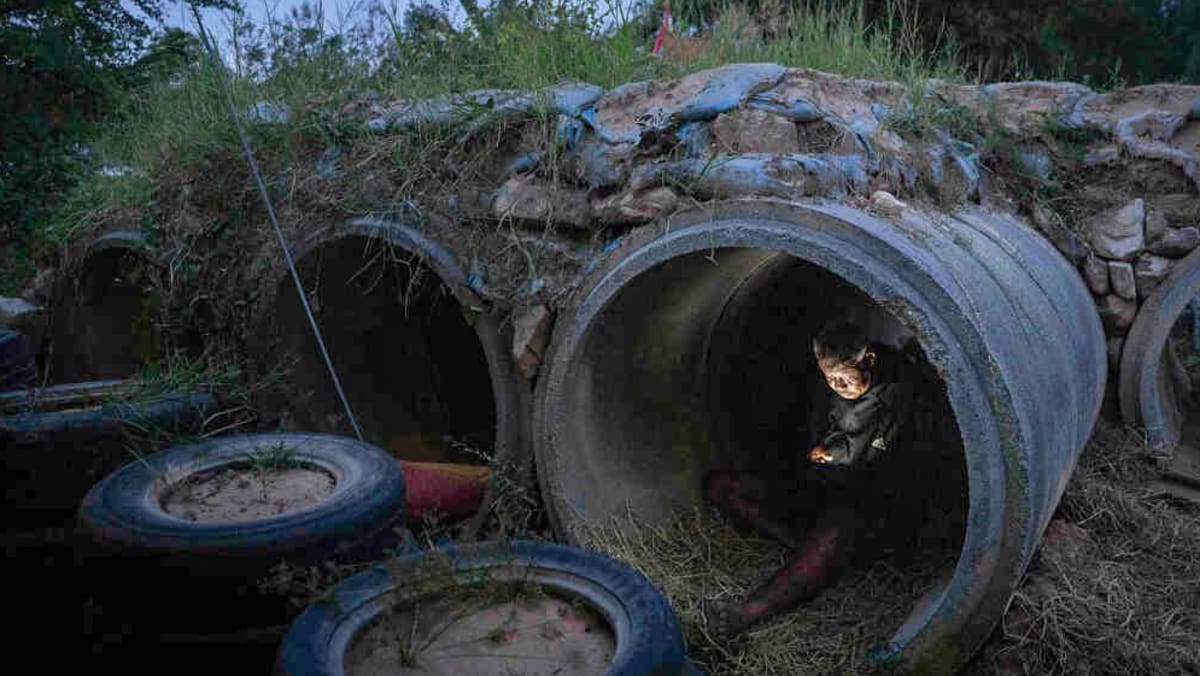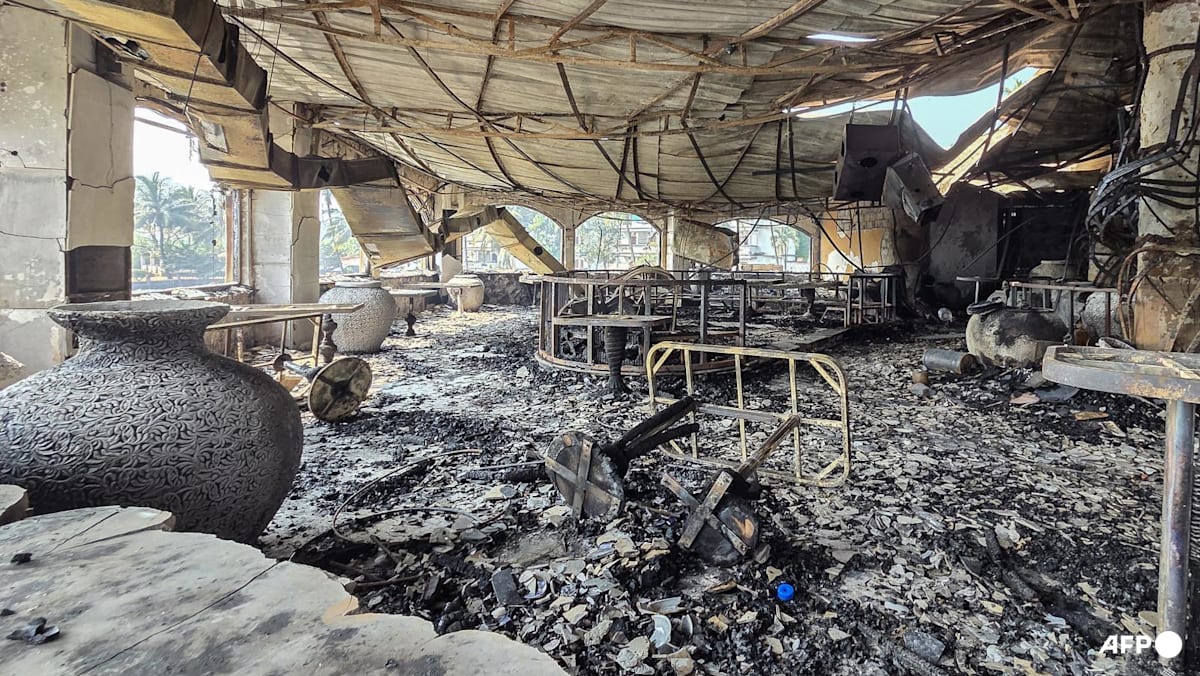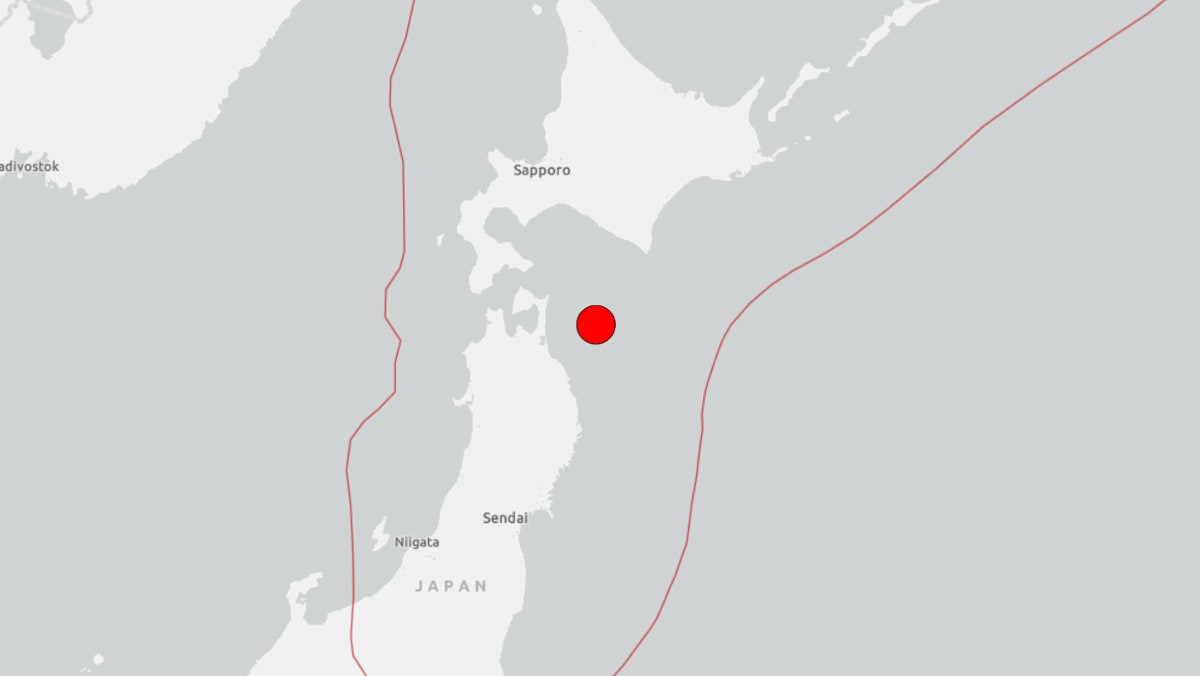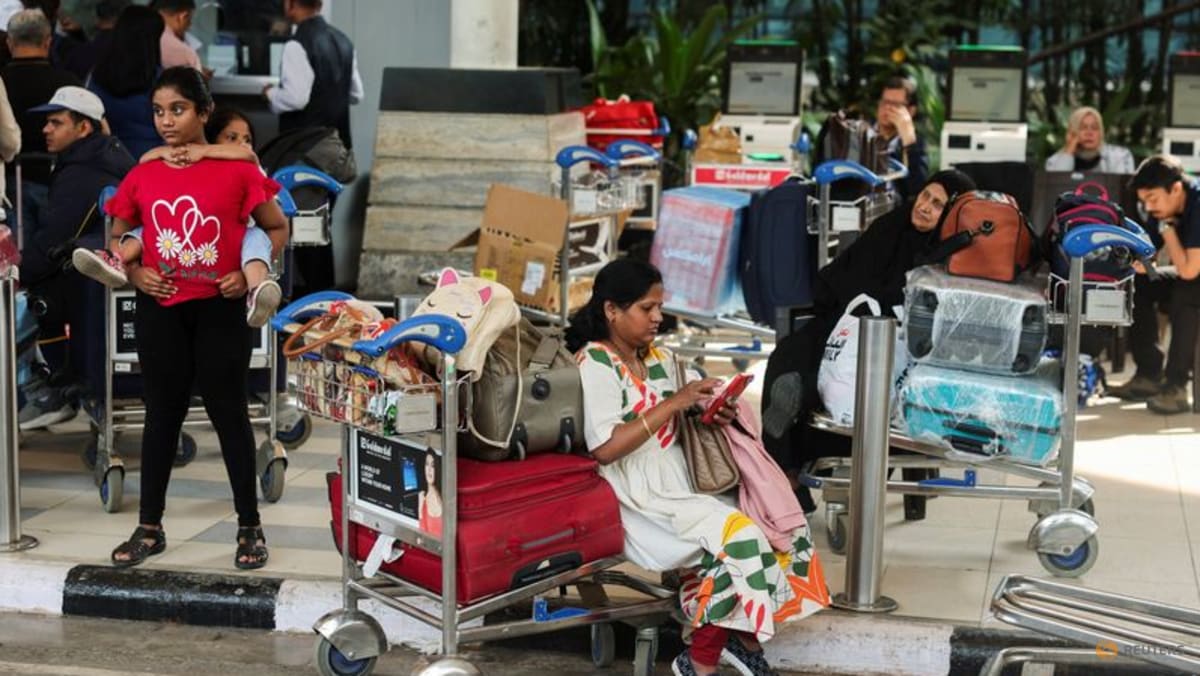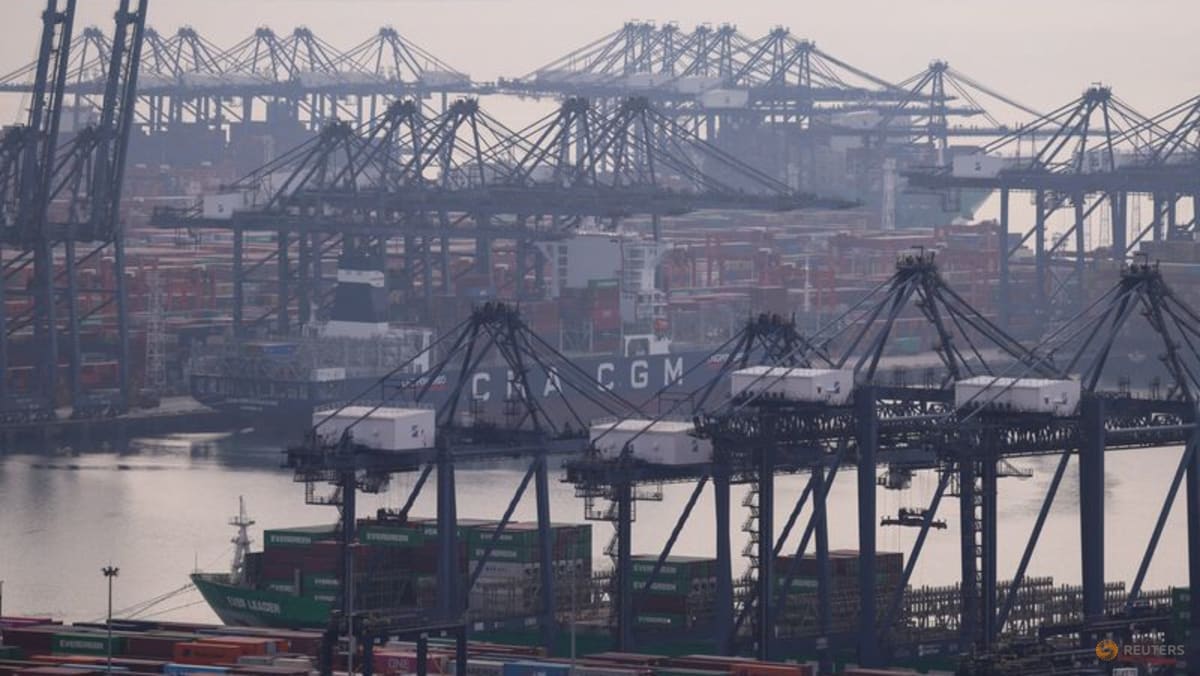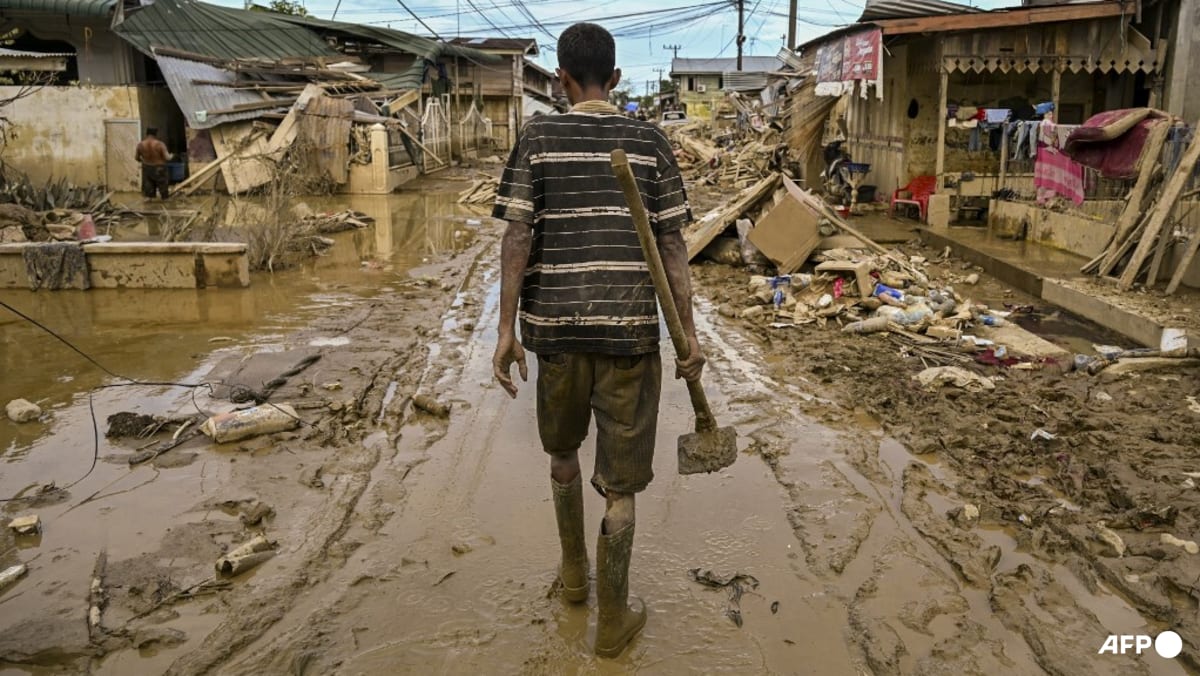Gales lash India and Pakistan coast as Cyclone Biparjoy hits
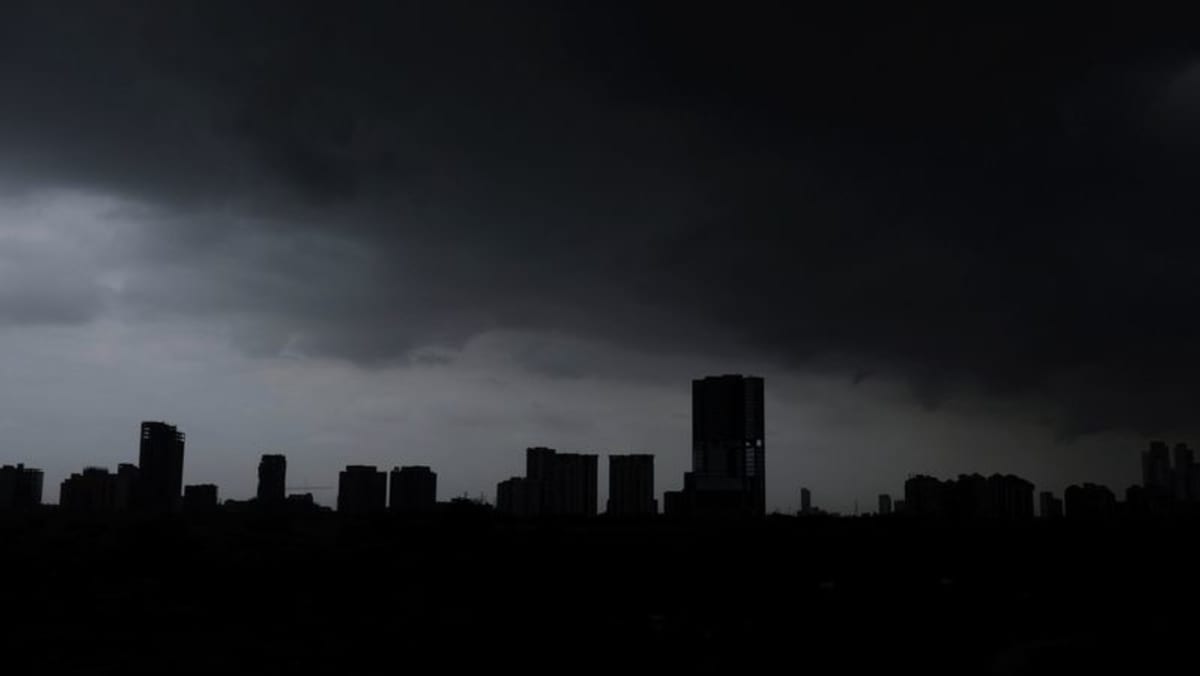
MANDVI, India: Howling gales and crashing waves pounded the coastline of India and Pakistan on Thursday (Jun 15) as Cyclone Biparjoy made landfall, with more than 175,000 people fleeing the storm’s predicted path.
Indian forecasters have warned that Biparjoy, whose name means “disaster” in Bengali, was likely to devastate homes and tear down power lines as it barrels through the western state of Gujarat.
The storm hit the coastline with winds of 125kmh and gusts of up to 140kmh at 6.30pm local time, the Indian Meterological Department said in a bulletin.
Coastal areas would continue to feel the full force of the storm through to midnight, state IMD director Manorama Mohanty told AFP.
The United States’ Joint Typhoon Warning Center forecast the storm would continue overnight into Pakistan’s Sindh province, home to the port megacity of Karachi.
Jayantha Bhai, a 35-year-old shopkeeper in the Gujarat beach town of Mandvi, told AFP before the storm hit on Thursday that he was afraid for his family’s safety.
“This is the first time I’ve experienced a cyclone,” said Bhai, a father of three boys aged between eight and 15, who planned to wait out the cyclone in his small concrete home behind the shop.
“This is nature, we can’t fight with it,” he said, as driving rain lashed his home.
Low-lying roads started to flood on Thursday afternoon after hours of rain.
Gusting winds earlier blew sheets of water, that reduced visibility with a dull grey mist.
Almost all stores were closed, and shoppers had crowded the few that remained open to buy last-minute food and water supplies.
India’s meteorologists warned of the potential for “widespread damage”, including the destruction of crops, “bending or uprooting of power and communication poles” and disruption of railways and roads.
SCHOOLS TURNED SHELTERS
The Gujarat state government said 94,000 people had relocated from coastal and low-lying areas to shelter.
Pakistan’s climate change minister Sherry Rehman said around 82,000 people had been moved from southeastern coastal areas.
“Our worst fears are that it will come in the evening or later tonight,” said Jaffer Ali in the largely abandoned fishing town of Zero Point – so-called because of its proximity to the Indian border.
The shanty settlement of hundreds of thatched homes was populated mainly by stray cats and wild dogs, with at least a hundred idle fishing boats tethered to a long pier running out to the ocean.
“We are afraid of what is coming,” Ali, 20, told AFP.
On Wednesday, Rehman said the coming storm was “a cyclone the likes of which Pakistan has never experienced”.
Many of the areas affected are the same inundated in last year’s catastrophic monsoon floods, which put a third of Pakistan under water, damaging two million homes and killing more than 1,700 people.
“These are all results of climate change,” Rehman told reporters.
Storm surges were expected to reach 4m, with flooding possible in Karachi – home to about 20 million people – and commercial flights about to be grounded.
“TERRIFIED”
About 200 people huddled together in a single-storey health centre in Kutch district, a short distance from India’s Jakhau port, late on Wednesday.
Many were worried about their farm animals, which they had left behind.
Dhal Jetheeben Ladhaji, 40, a pharmacist at the health centre, said 10 men had stayed behind to look after hundreds of cattle crucial to their village’s livelihood.
“We are terrified, we don’t know what will happen next,” Ladhaji said.
Cyclones – the equivalent of hurricanes in the North Atlantic or typhoons in the Northwest Pacific – are a regular and deadly menace on the coast of the northern Indian Ocean, where tens of millions of people live.
Scientists have warned that storms are becoming more powerful as the world gets warmer with climate change.
Roxy Mathew Koll, a climate researcher at the Indian Institute of Tropical Meteorology, said cyclones derive their energy from warm waters, and that surface temperatures in the Arabian Sea were 1.2 to 1.4 degrees Celsius warmer than four decades ago.
Source: CNA


